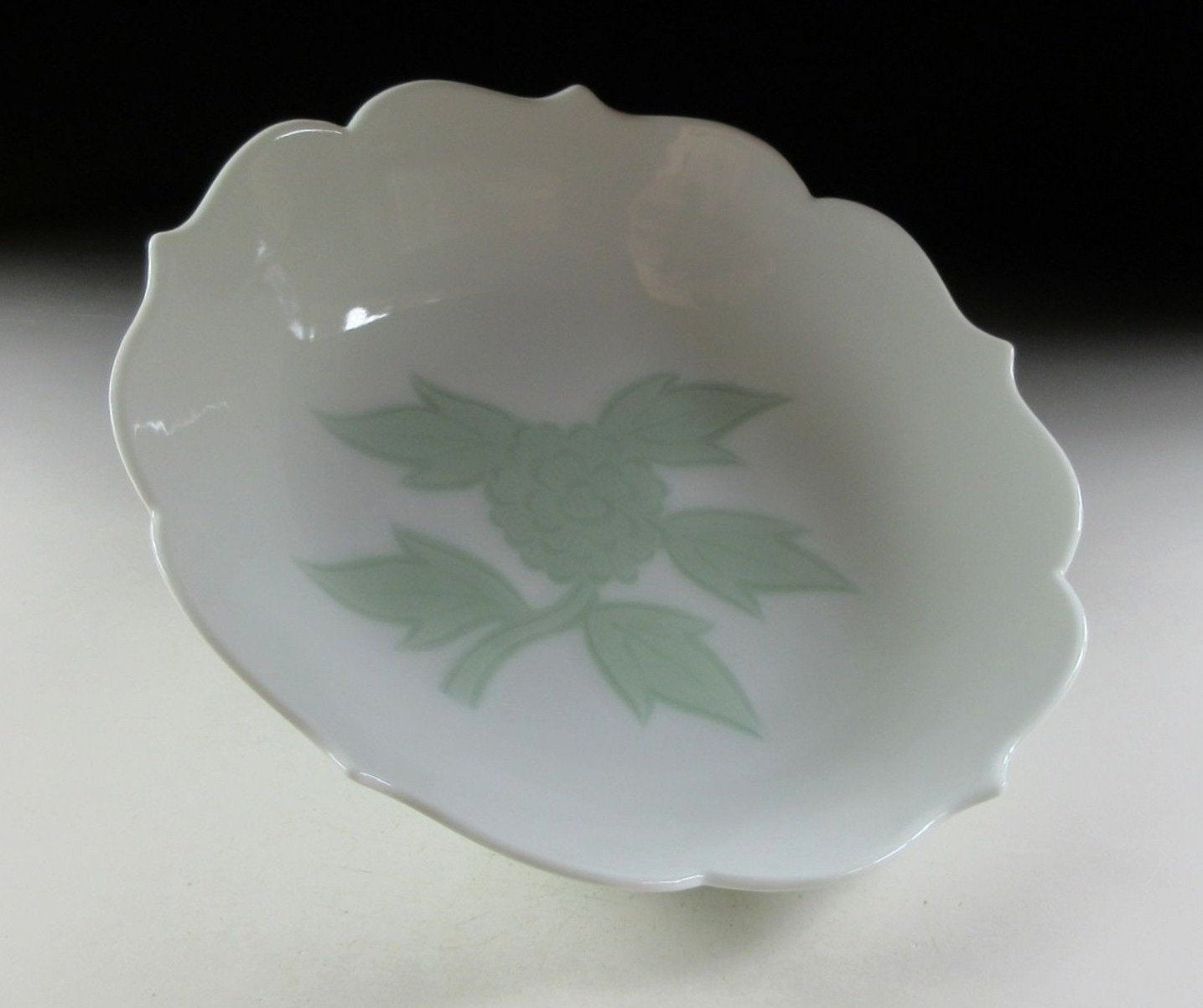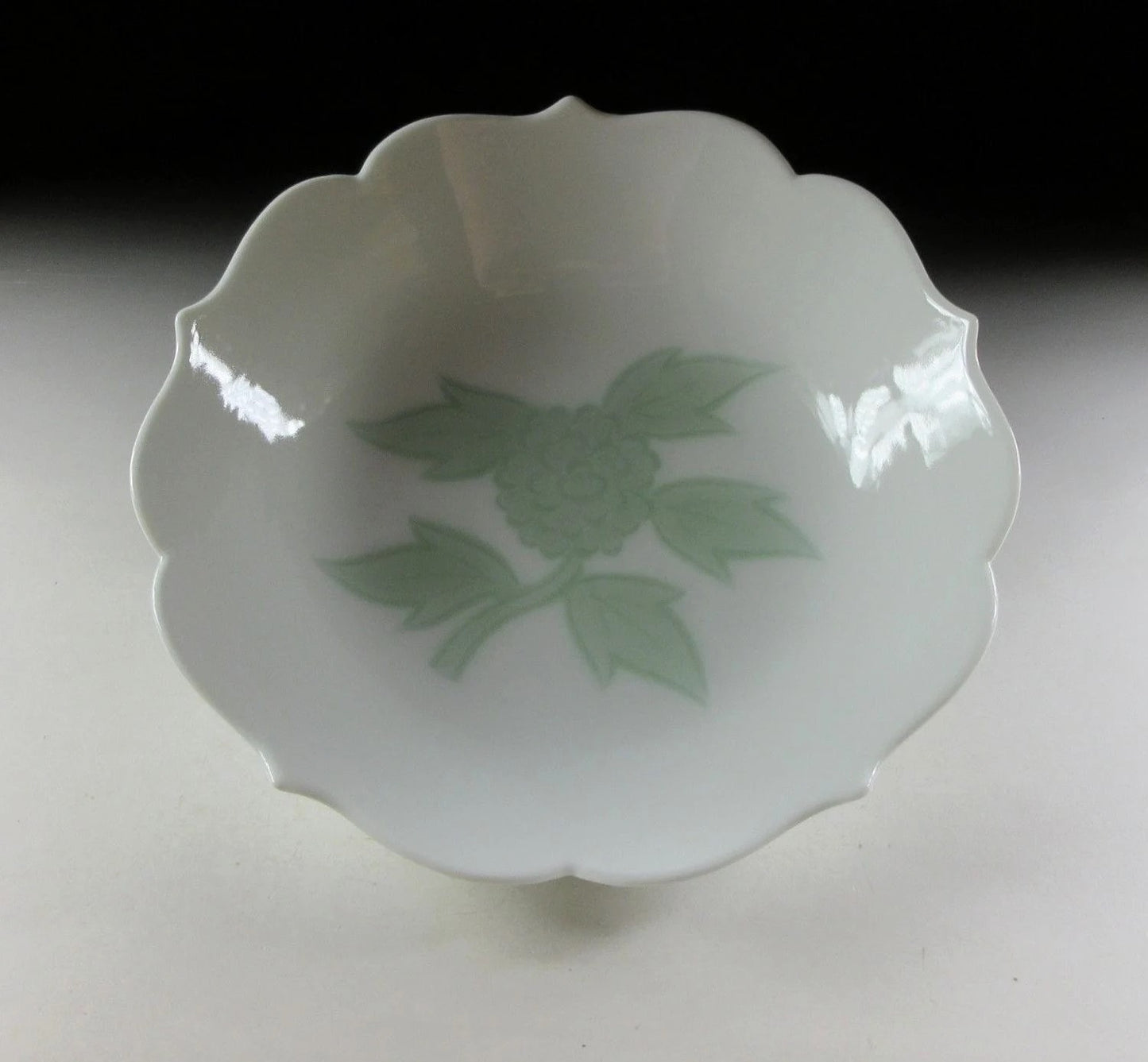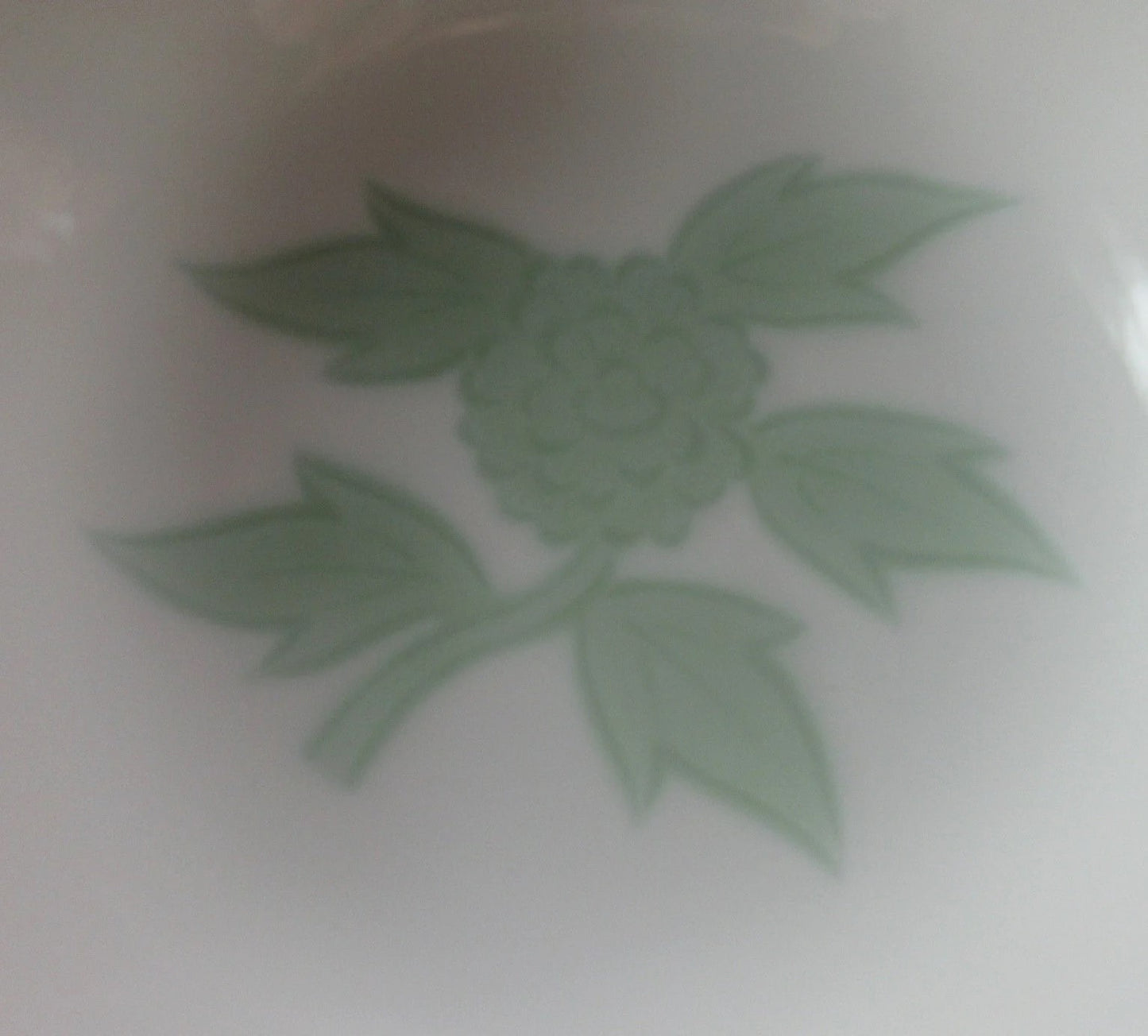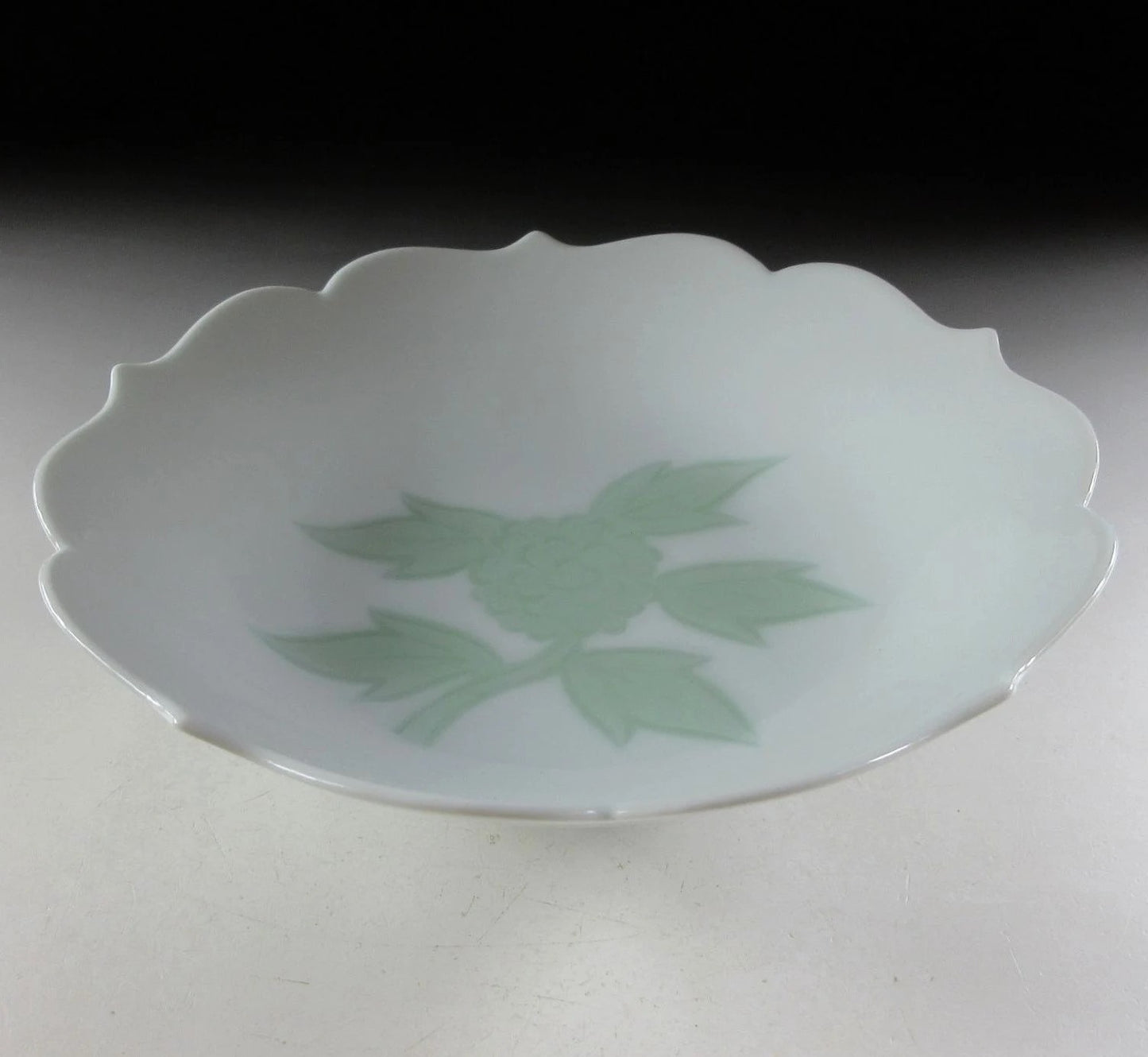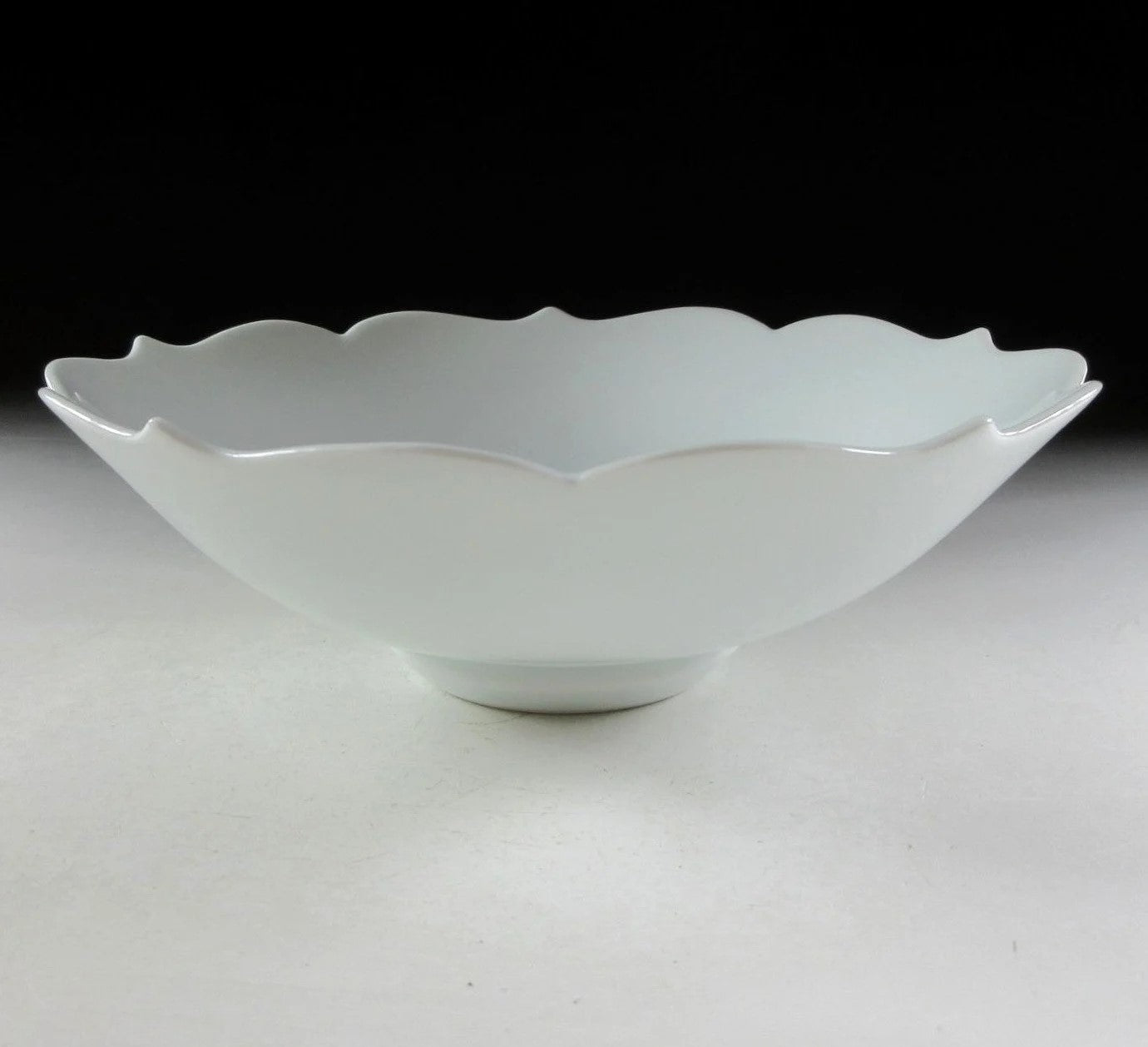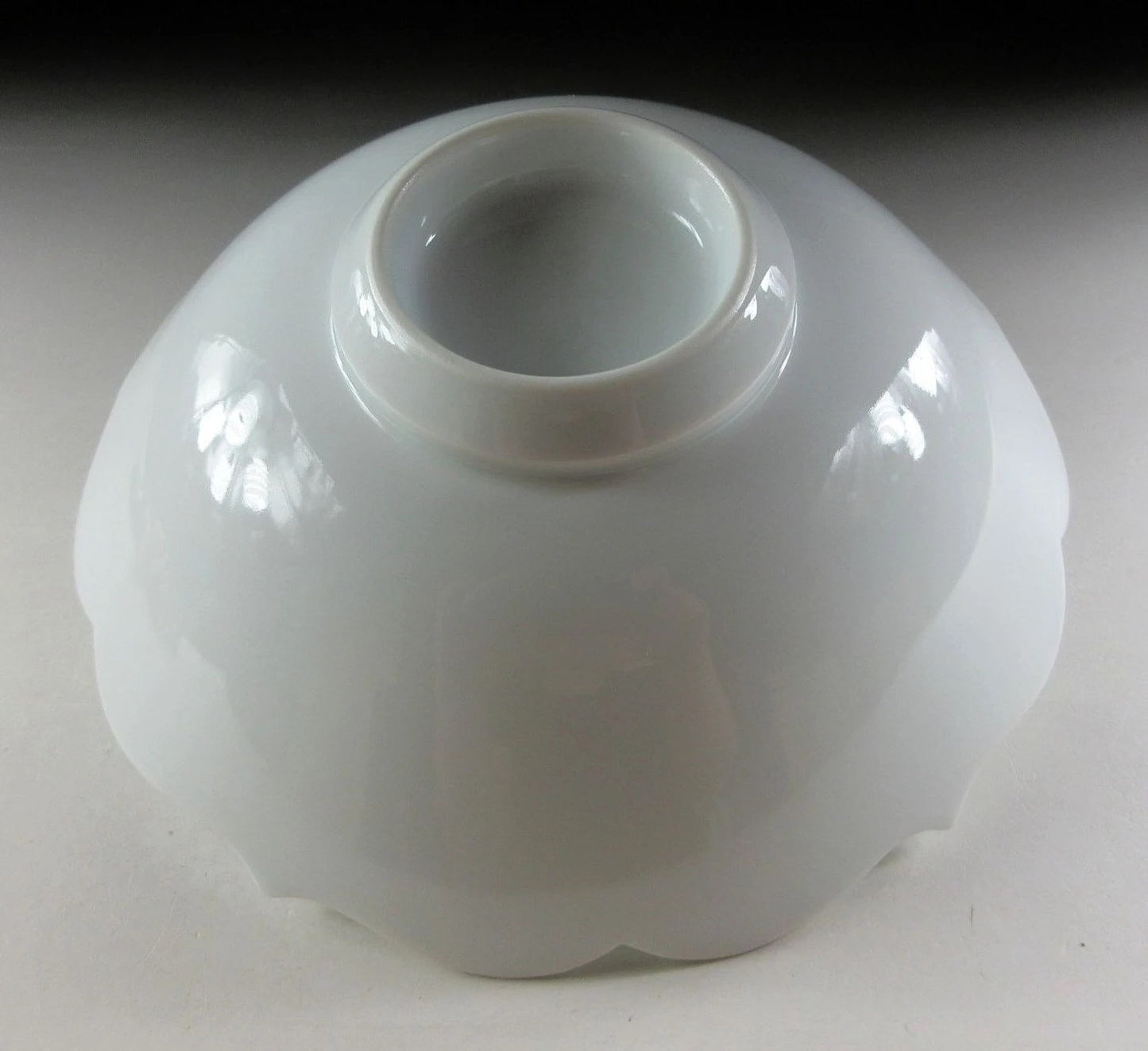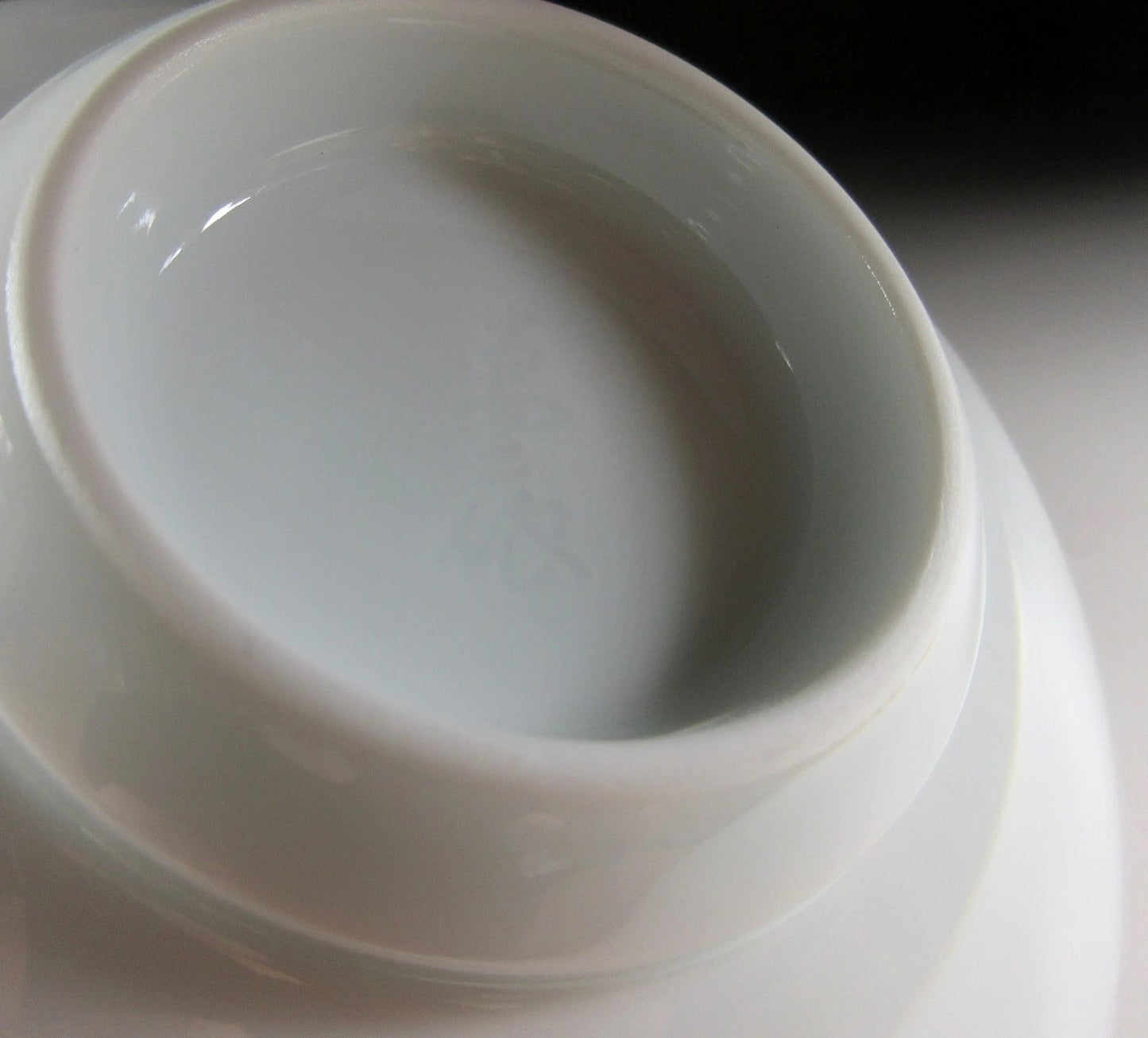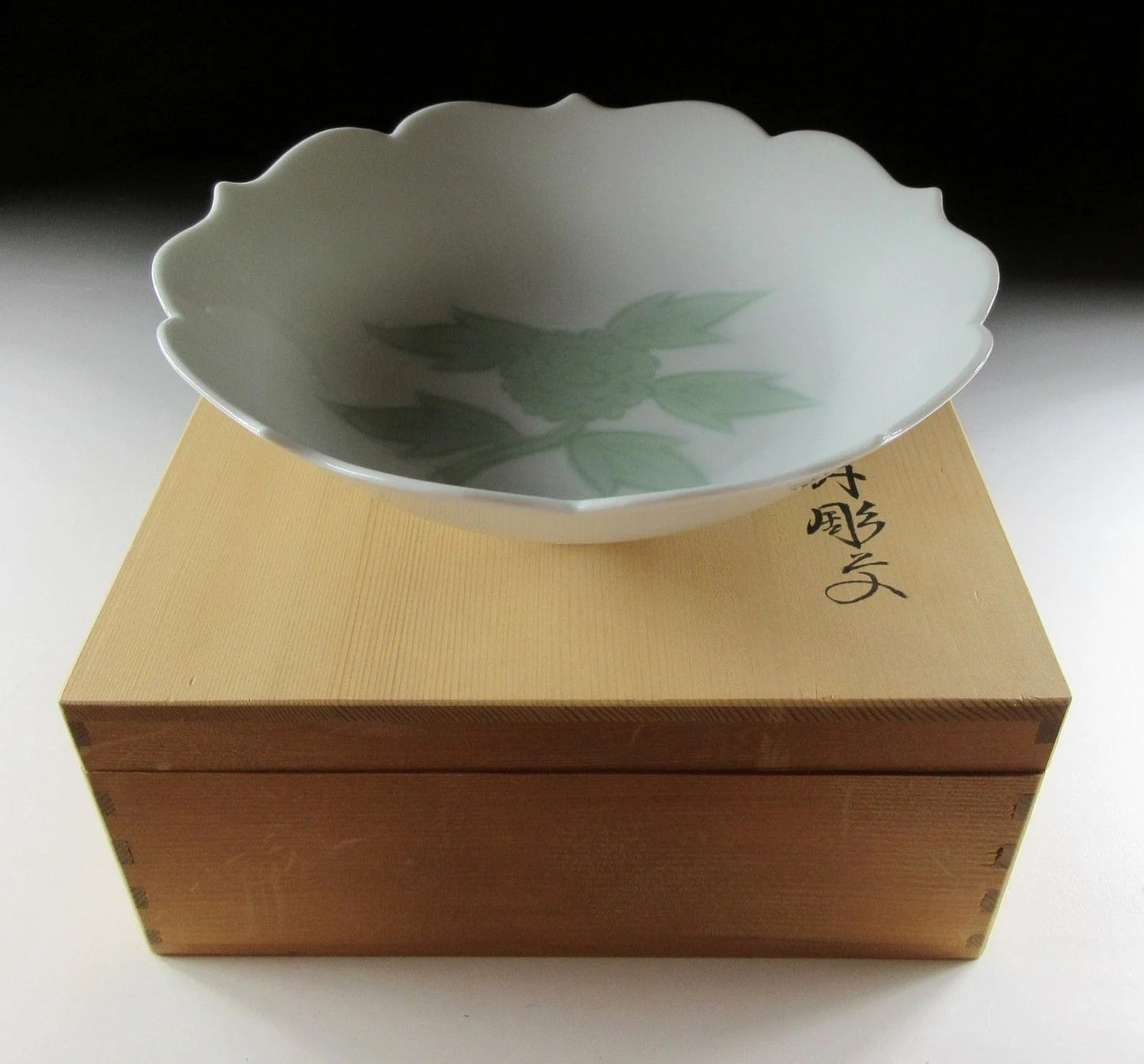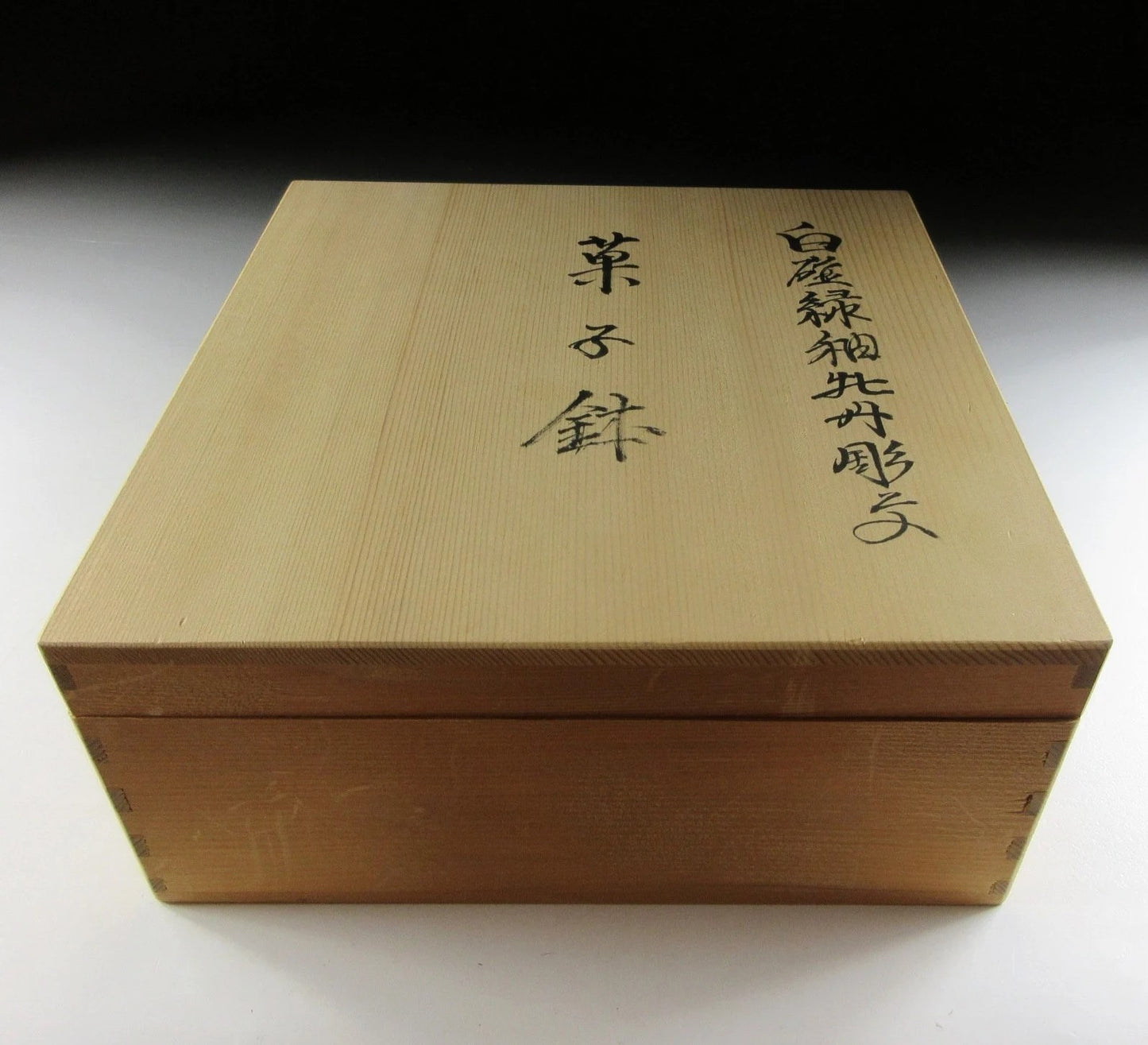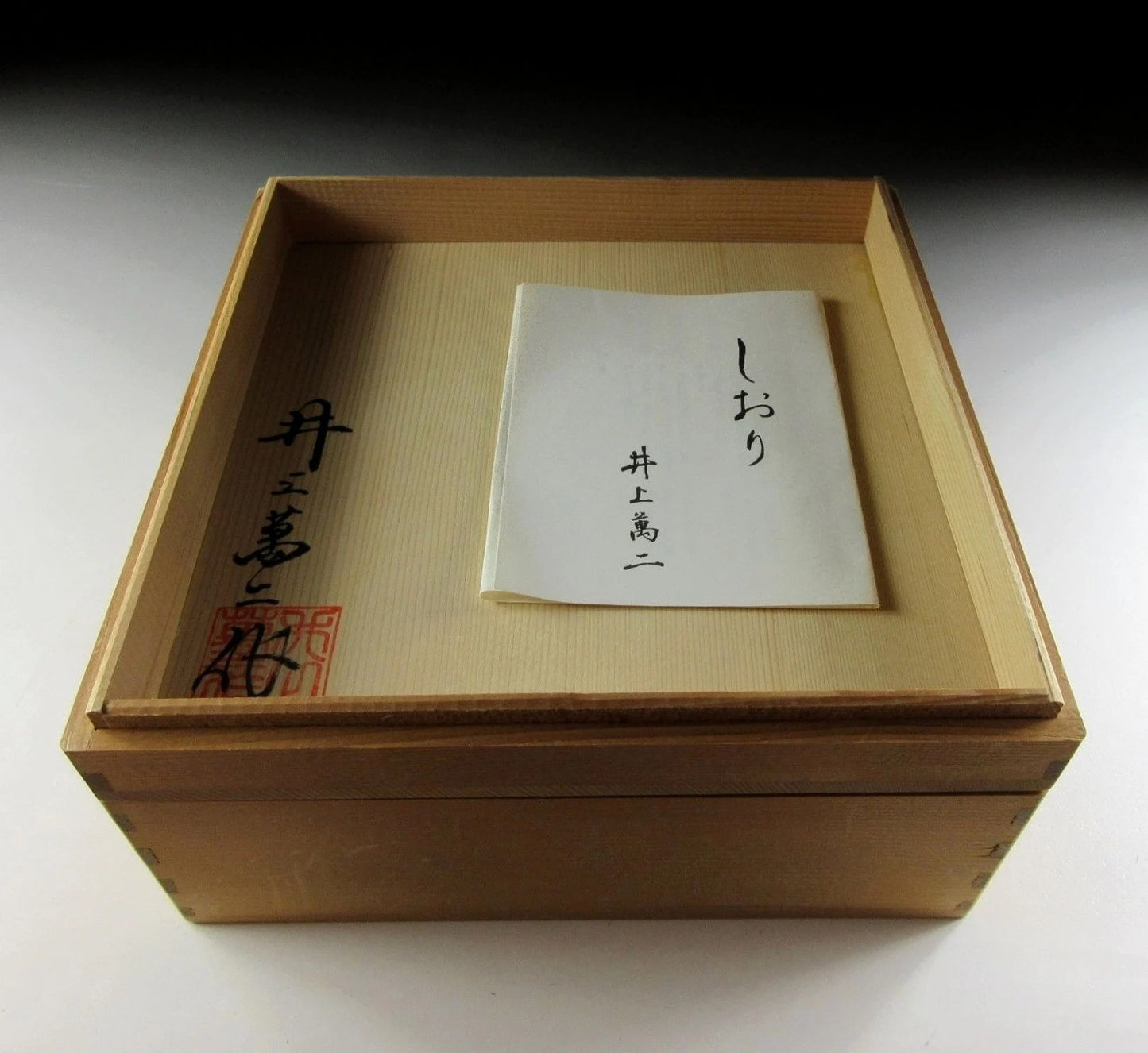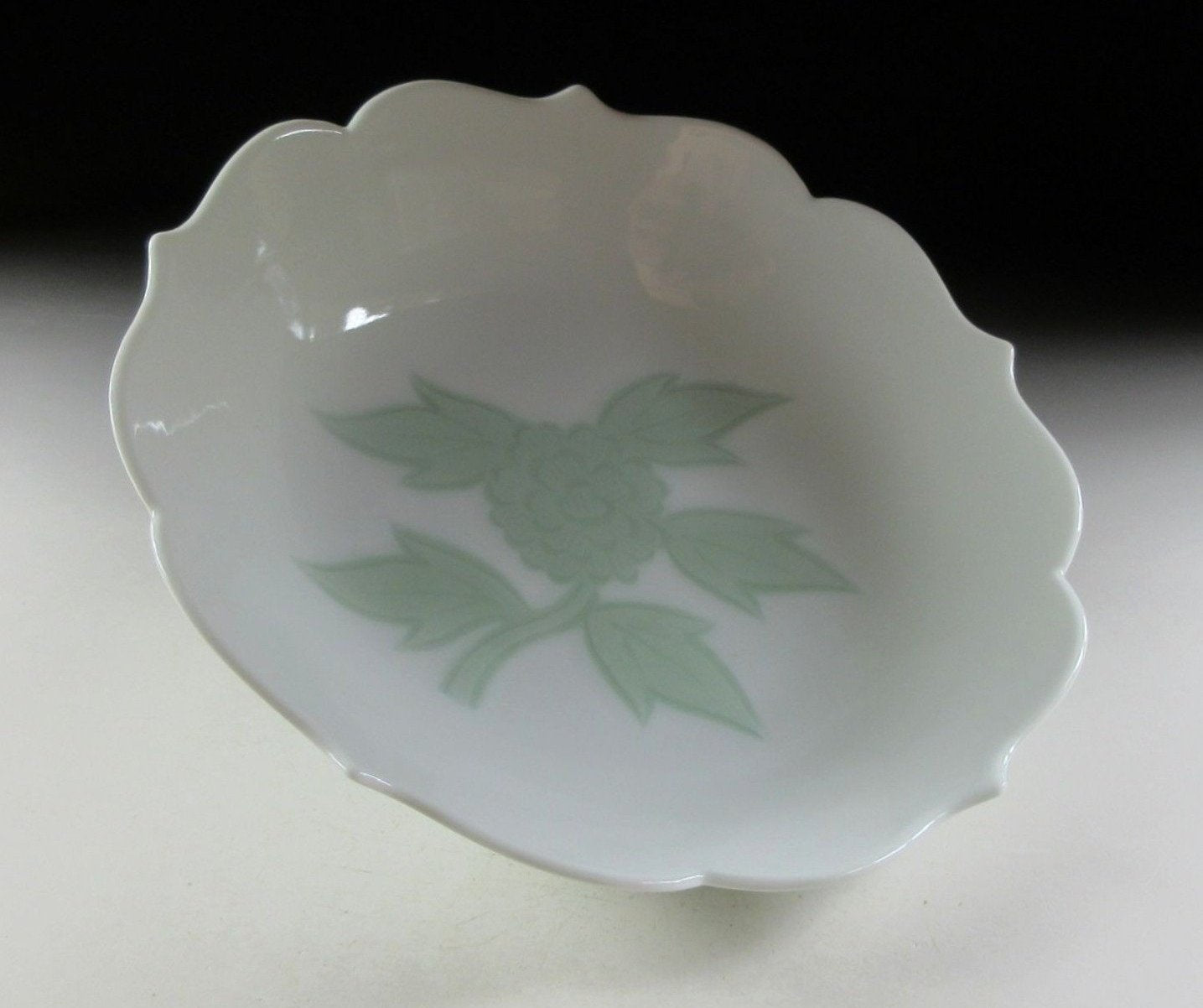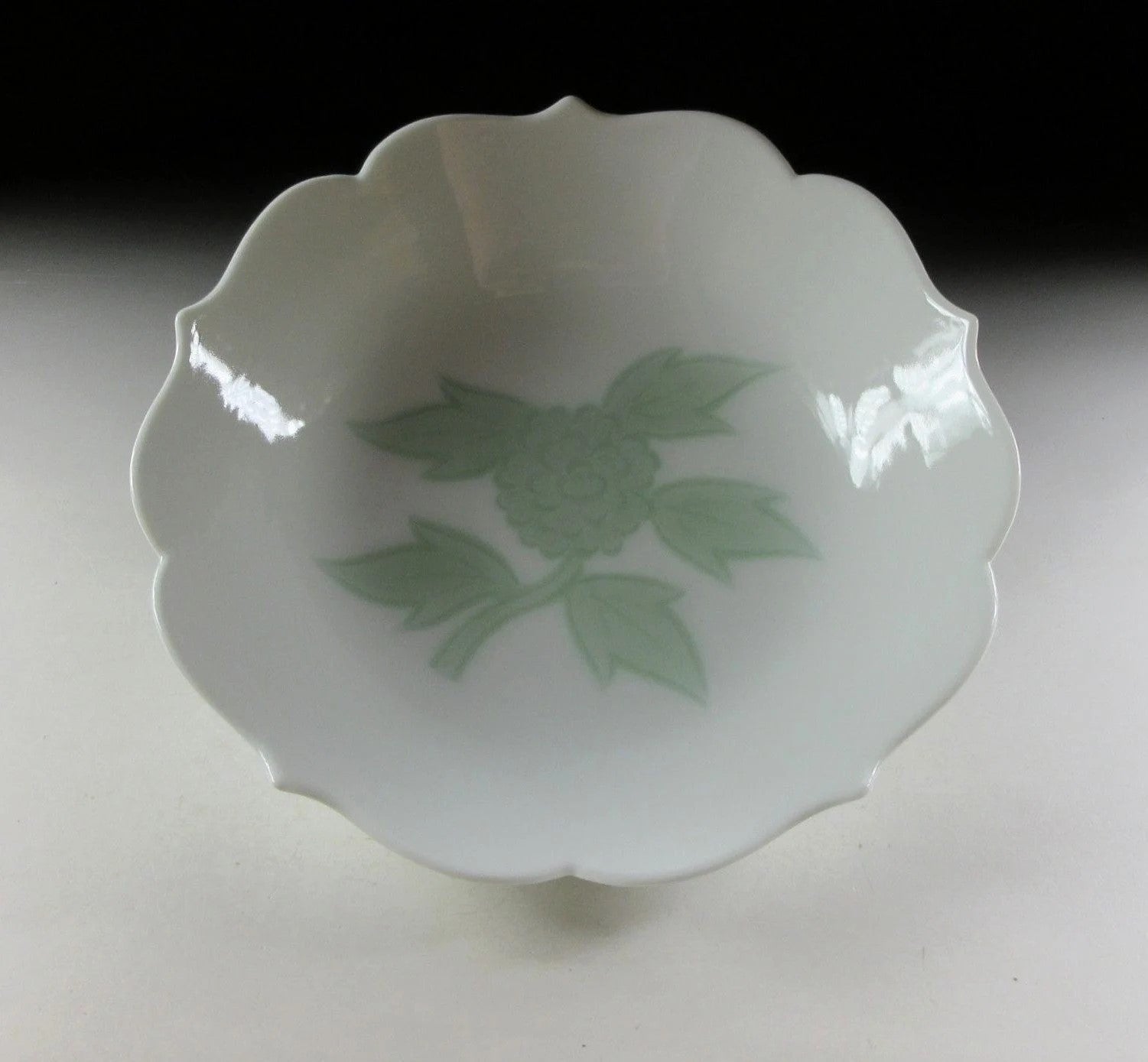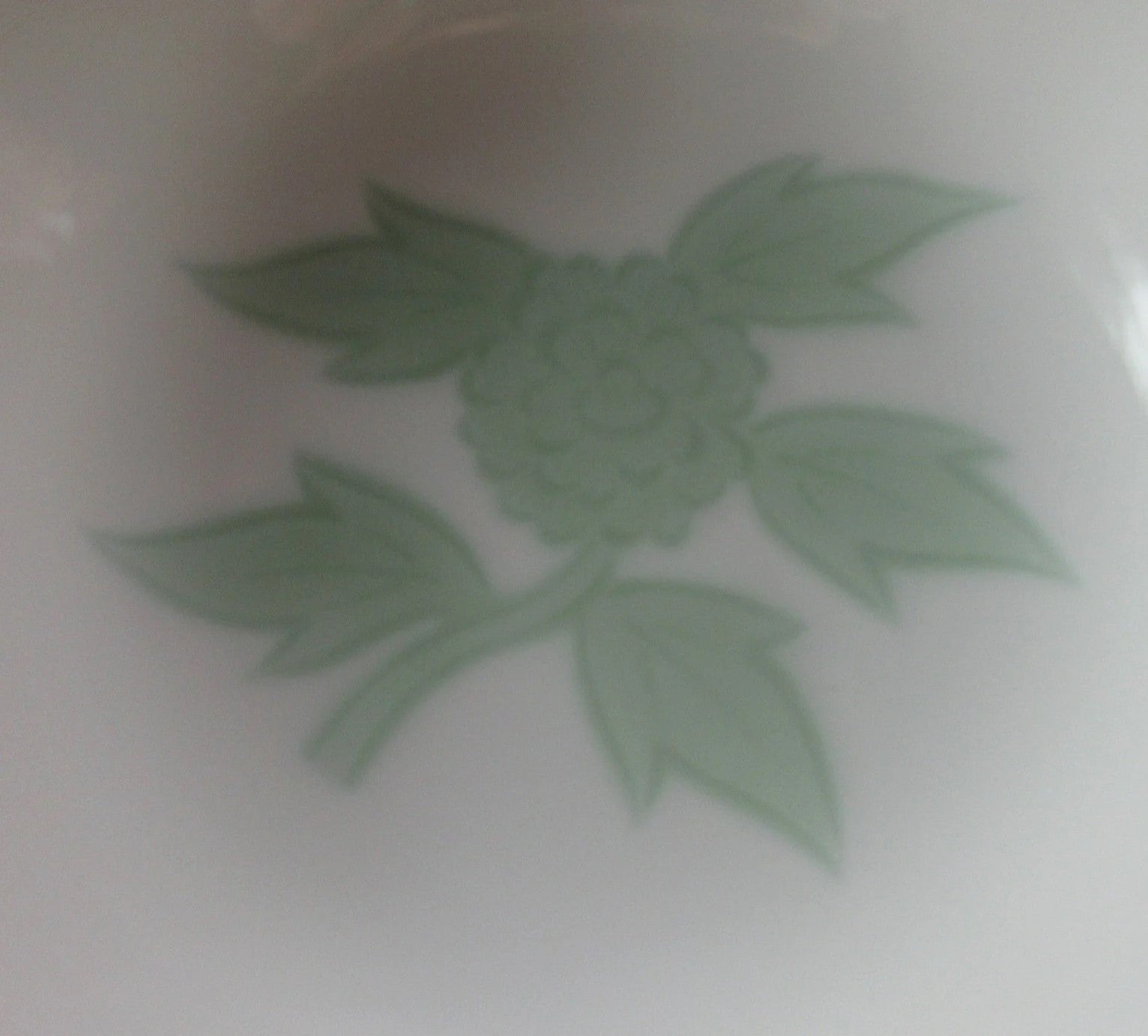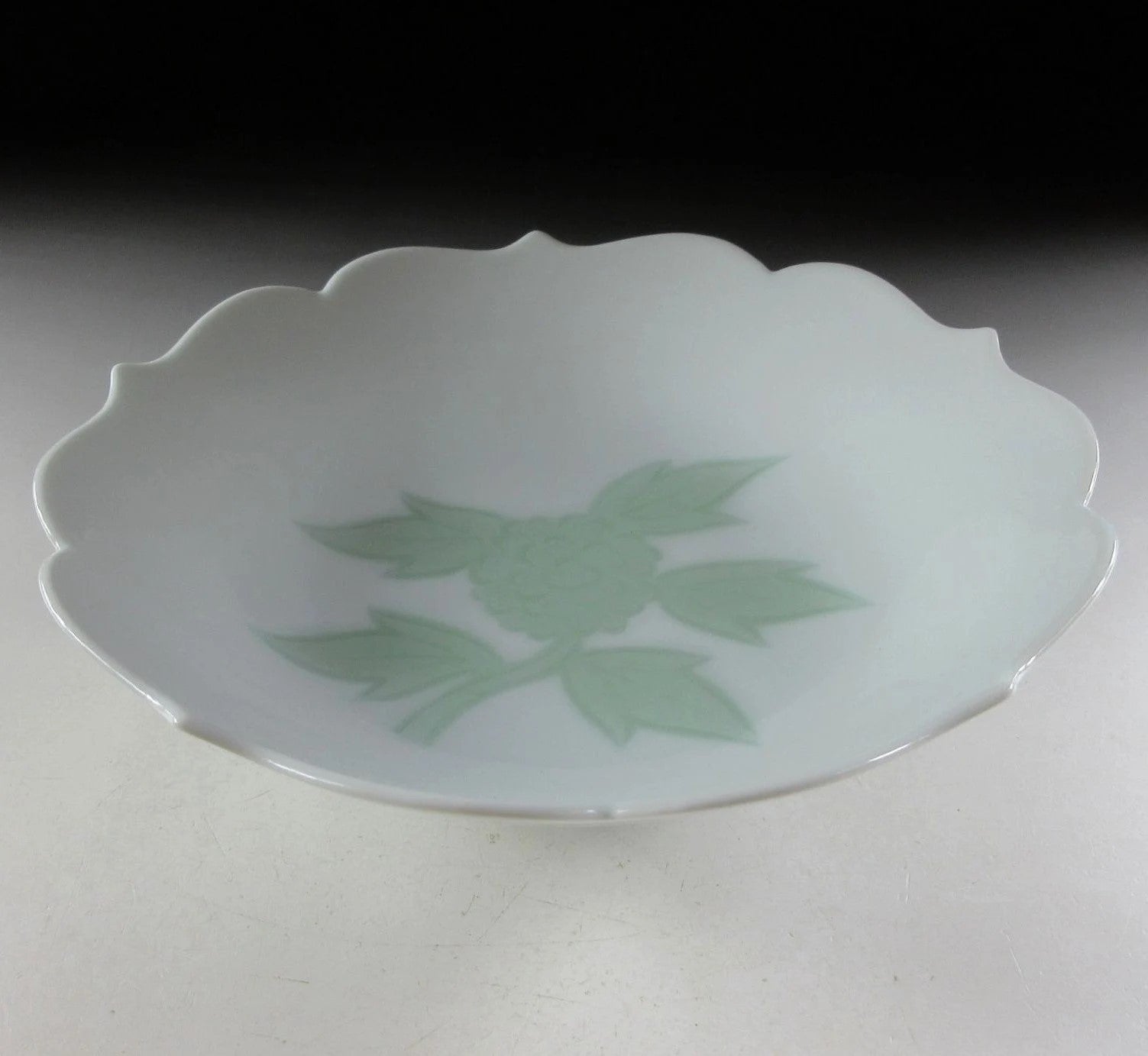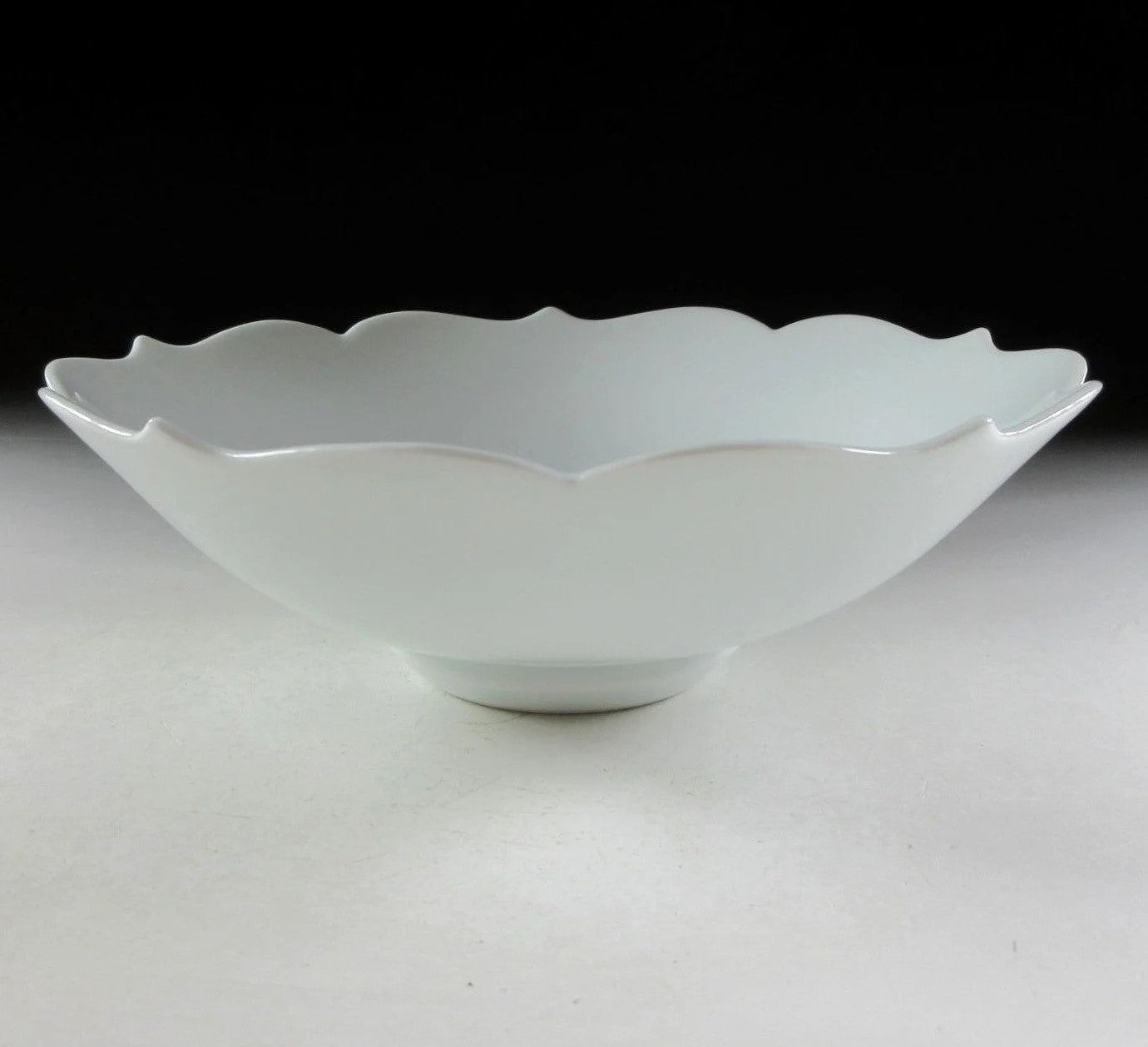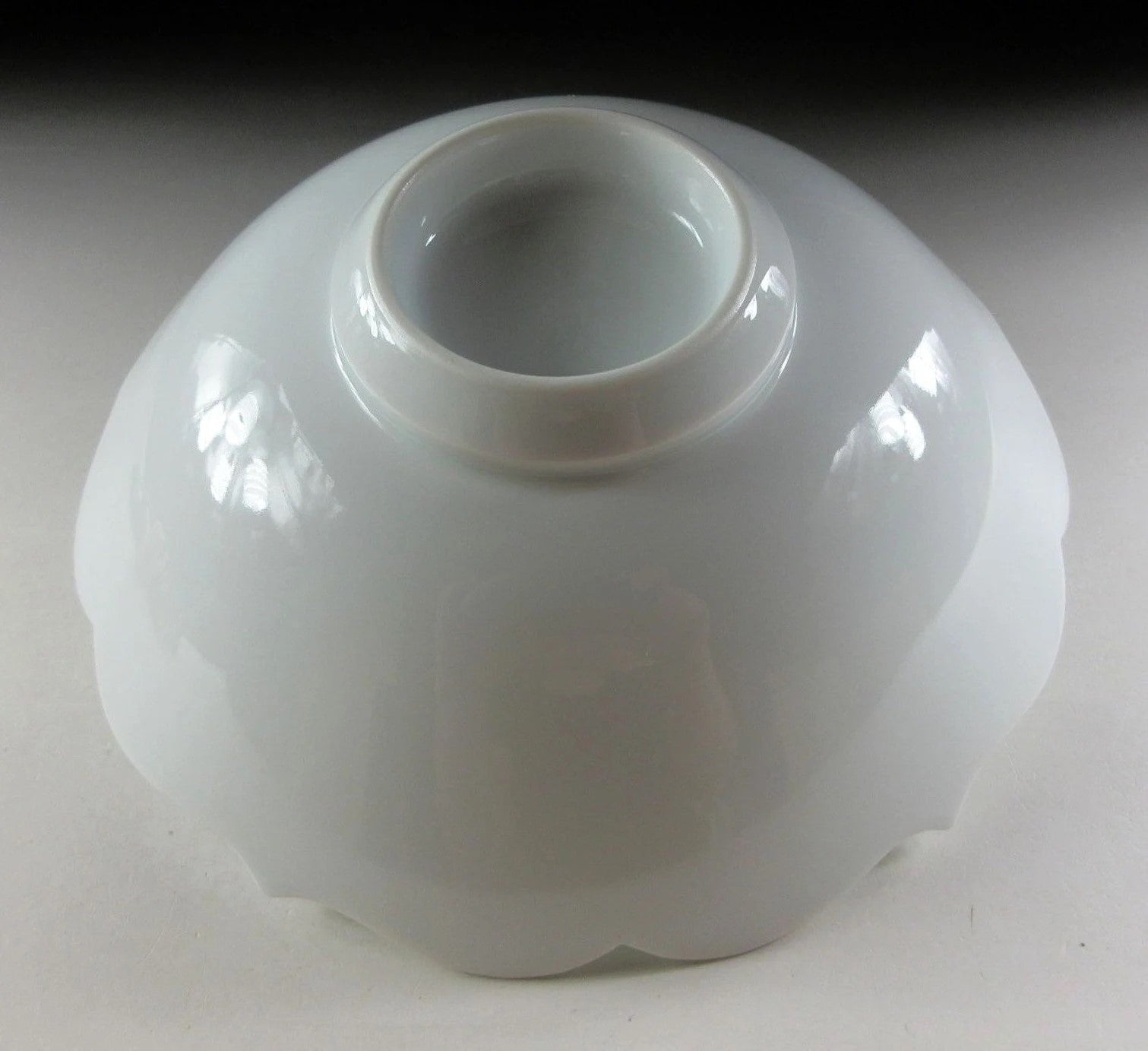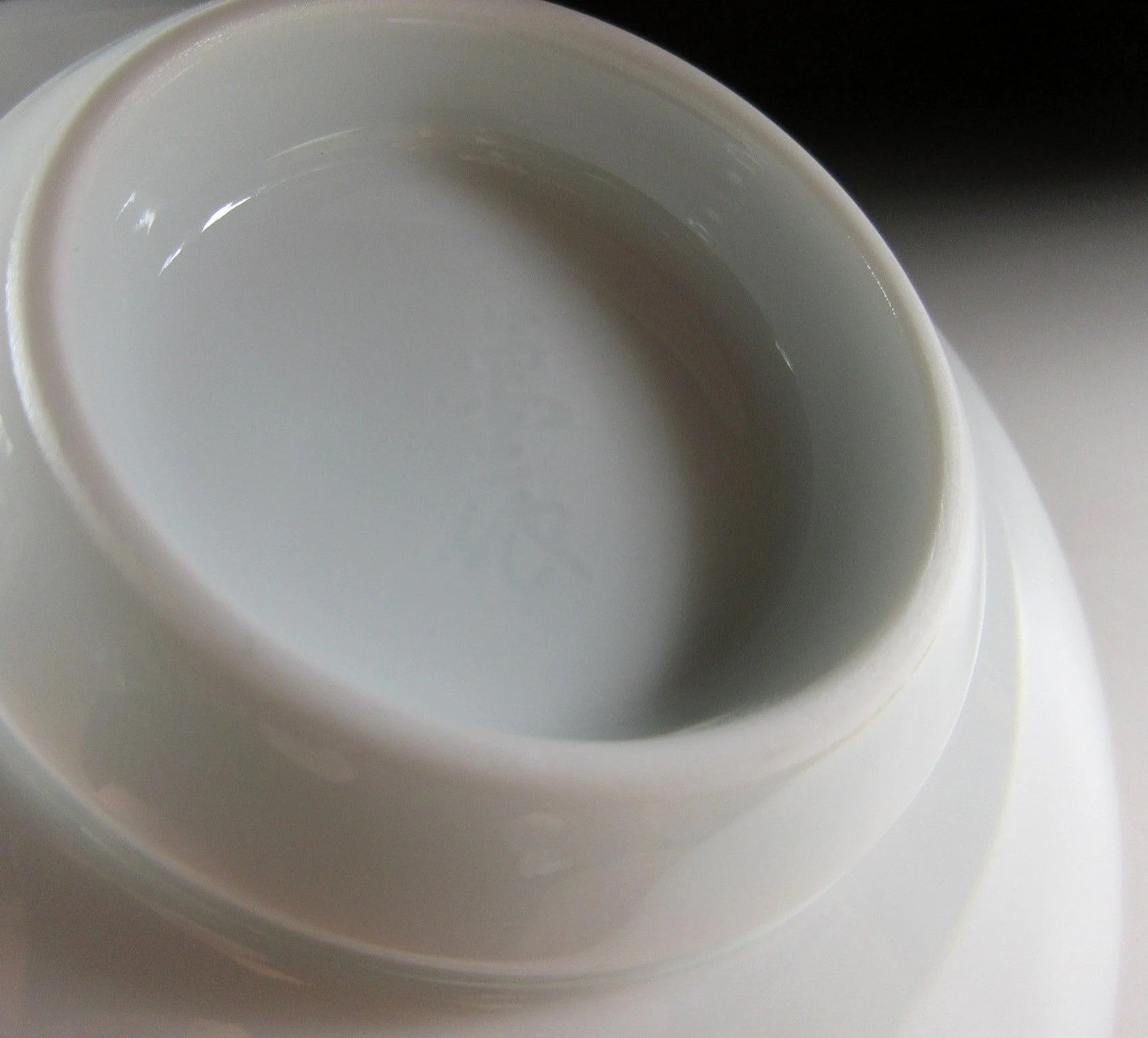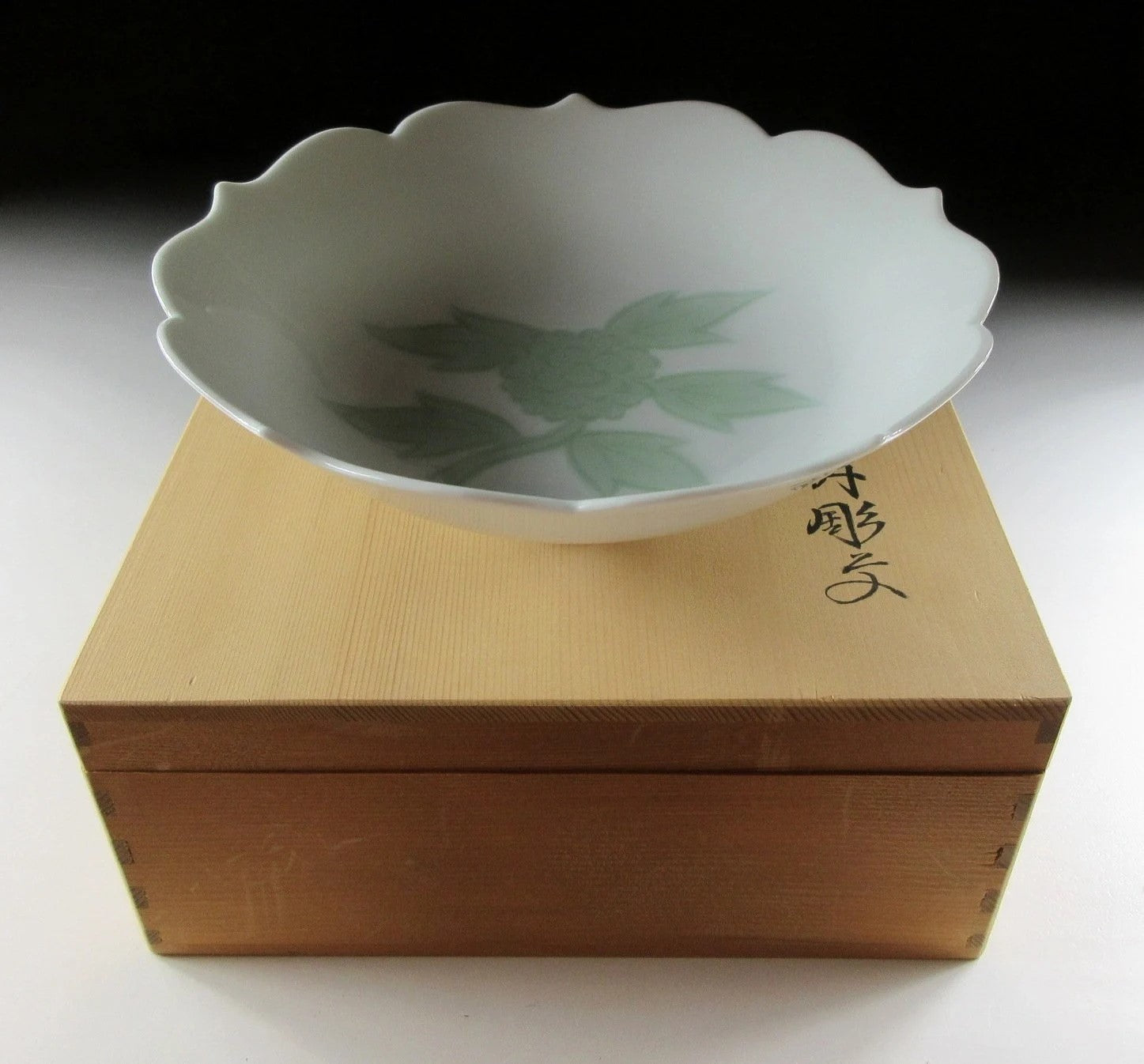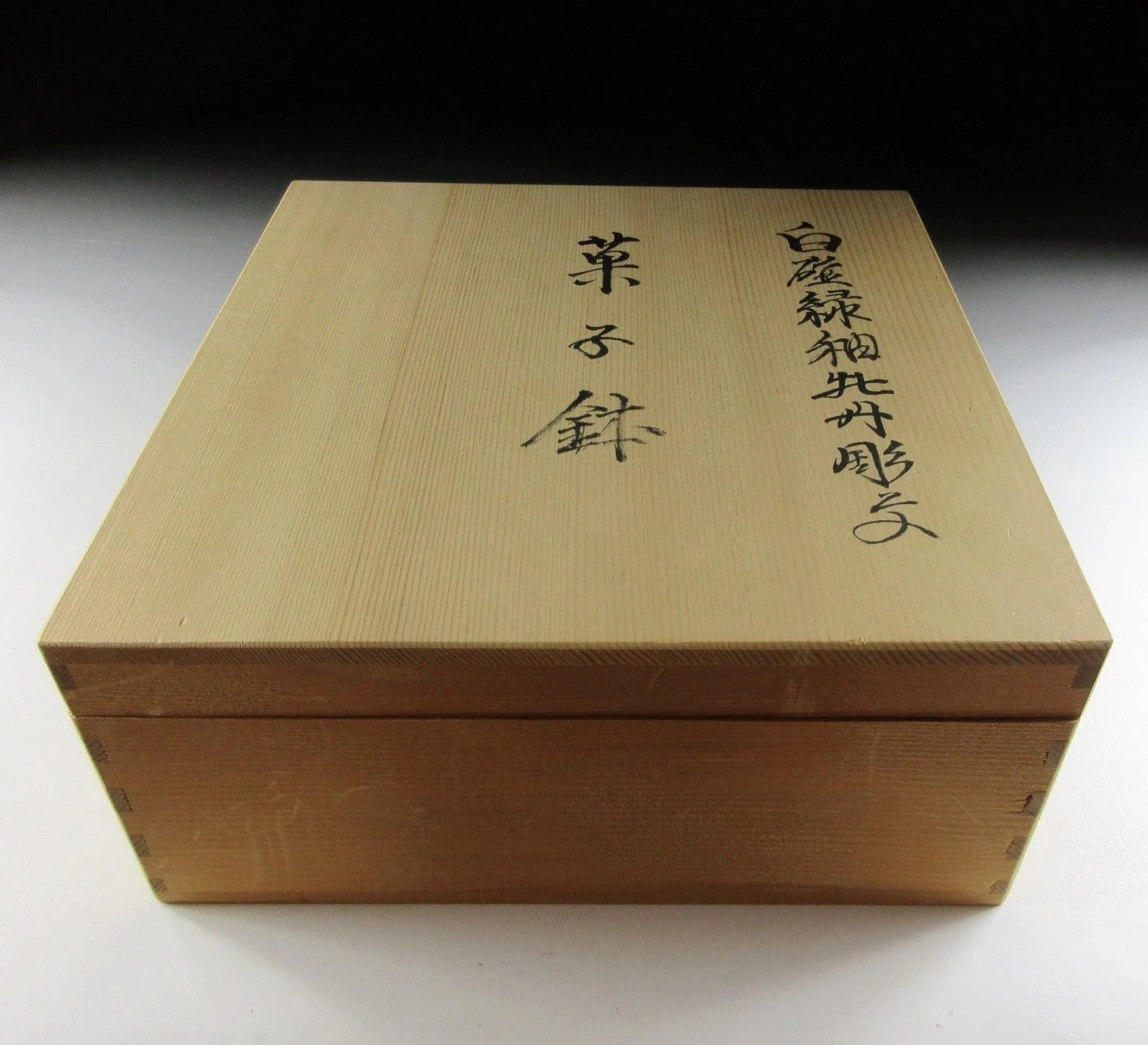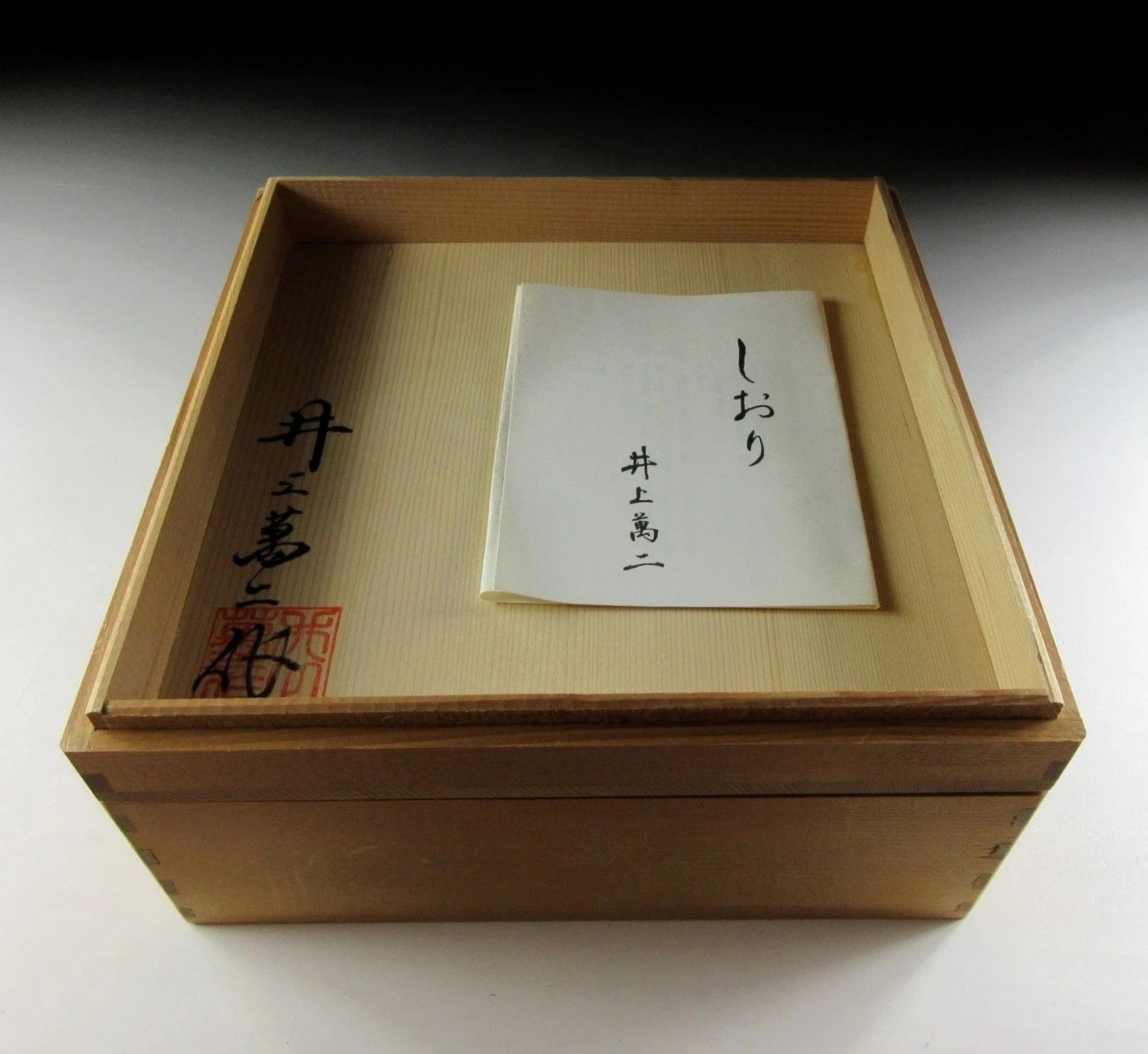Kominka Zakka
Inoue Manji Hakuji Glaze Porcelain Bowl
Inoue Manji Hakuji Glaze Porcelain Bowl
Couldn't load pickup availability
*THIS ITEM WILL BE SHIPPED VIA EMS EXPRESS TO ALL DESTINATIONS.
This listing is for an Arita-ware hakuji glaze porcelain bowl made around 20 years ago by master potter and Living National Treasure, Inoue Manji. It is made of porcelain and the interior is decorated with a celadon glazed peony motif. The outline of the peony is incised into the surface of the bowl, and the rim is beautifully carved to form a flower shape. The signature of the potter can be found on the bottom, and it comes with its original signed wooden storage box. It also comes with a Japanese language profile about the potter and his remarkable career.
Inoue Manji (b.1929) is a renowned porcelain ware potter from Arita city. He apprenticed under Sakaida Kakiemon XIV and went on to develop his own minimalist style of wares. His pieces are wheel-thrown and then painstakingly carved into perfection. His tableware is often simplistic and undecorated, and coated in translucent light green glaze. During his illustrious career he spent five months as a mentor at the University of Pennsylvania. This brought about some unexpected changes in his own work, he began to feel less bound by tradition and started adding more sculptural characteristics to his work. He has won various prestigious awards throughout his career, the most notable being his first at the Japan Traditional Crafts Exhibition in 1968, then at the Japan Ceramics Exhibition in 1971, the much sought after Minister's Award at the National Traditional Crafts Exhibition in 1977, the Saga Prefectural Cultural Services Award in 1986, and the Culture Minister of Education Award in 1987. He was designated as a Contemporary Master Craftsman in 1979, he served as a judge at the Issuikai from 1983-2011, he was awarded the Distinguished Services Award by Saga Prefecture in 1993, named an Audit Commissioner of the Japan Traditional Crafts Exhibition in 1995, awarded the Japanese Government's Medal with Purple Ribbon in 1997, and awarded the Order of the Rising Sun, Gold Rays with Neck Ribbon in 2003. He was officially designated as a Living National Treasure by the Japanese government in 1995. **Fellow sellers, this information was researched by Kominka Zakka and CANNOT be used in your own listings.
Arita-ware refers to porcelain produced in the town of Arita in the southern island of Kyushu. In 1616 a Korean potter named Ri Sanpei discovered kaolin at Mt. Izumiyama, thus resulting in the birth of Japanese porcelain. Arita-ware is sometimes referred to as Imari-ware, and this is because export wares were shipped from the nearby port in Imari town. Edo period Arita-ware is generally classified into three groups; Ko-Imari (Early Imari), Kinrande (gold painted porcelain), and Kakiemon (elegant motifs of birds, animals and flowers). Another special, high quality porcelain known as Nabeshima (featuring woven/textile patterns) was also produced and given as gifts to the Imperial court and ruling class. To this day Arita remains at the centre of porcelain production in Japan.
Hakuji refers to high-fired porcelain that was created by applying transparent glaze to white paste. The technique evolved from those used in China and Korea, and Korean potter Ri Sampei is said to be the first to begin producing porcelain-ware here in Japan. Originally hakuji was simply a base colour for Kakiemon and Nabeshima pieces. It was not until the Meiji Period that people began to appreciate the raw beauty of plain white porcelain. Although simple in appearance it is actually very difficult to fire hakuji pieces without flaws, thus making it very expensive.
Sizes
Box: H.9.5cm (3.7”) x 20.8cm (8.1”) x 20.8cm (8.1”)
Bowl: H.6.4cm (2.5”) x Dia.19.5cm (7.6”)
Condition
It’s in very good condition with no chips or cracks.
**Germany, France, Greece, Spain, Poland, Austria, Slovakia, Lithuania, Slovenia: NO SHIPPING. Very strict and expensive packaging laws in place and we are not licensed to send products to these countries. We have no plan to register at this time because the process is in some cases very expensive and complicated, plus each country has its own set of regulations and application process.
Share
